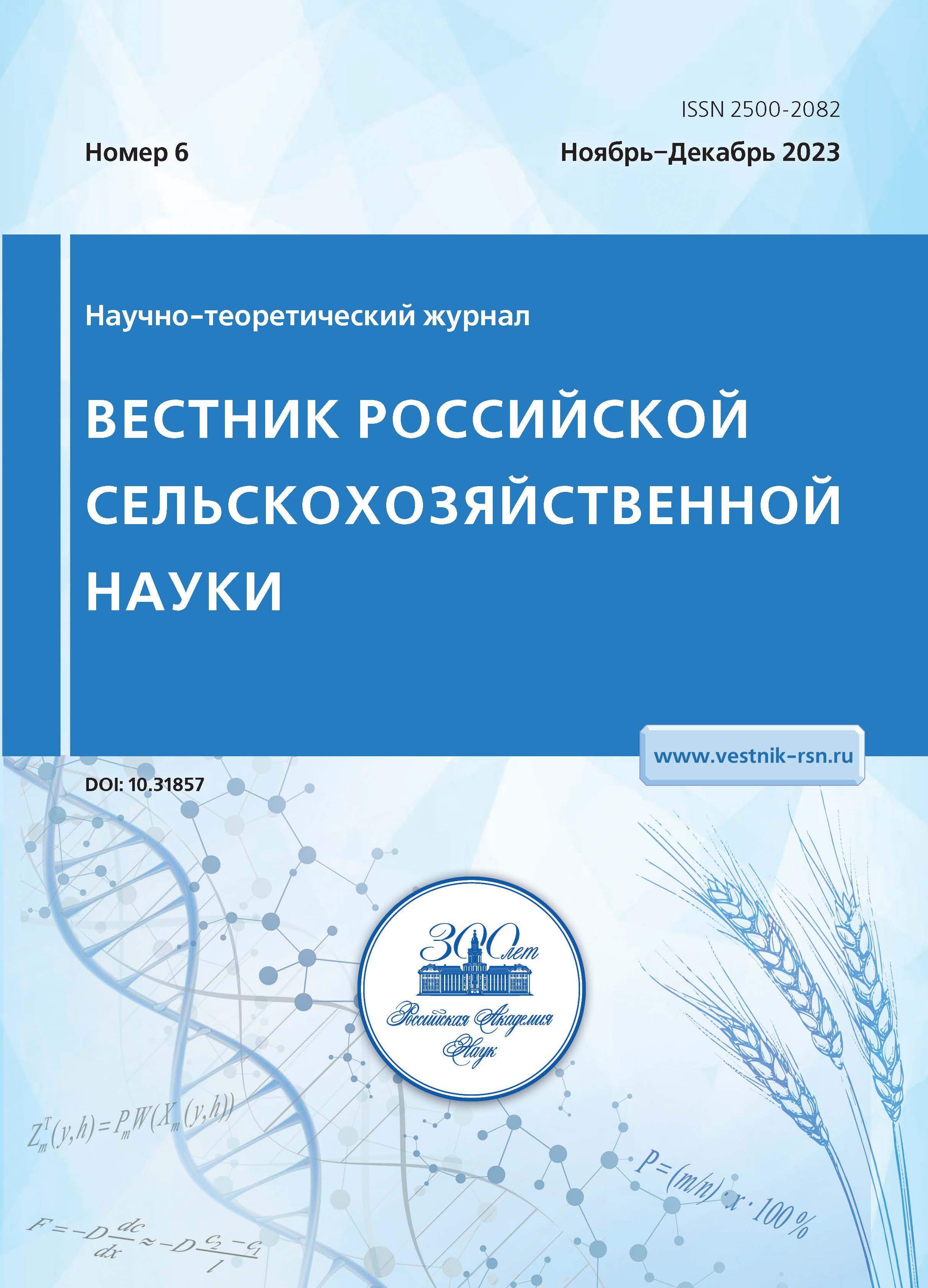Environment influence on the physiological and productive genotypes indicators in Tajikistan republic different zones
- Authors: Sadikov A.T1, Temirbekova S.K2
-
Affiliations:
- Institute of Farming of the Tajik Academy Agricultural Sciences
- Federal State Budgetary Scientific Institution All-Russian Research Institute of Phytopathology
- Issue: No 6 (2023)
- Pages: 26-30
- Section: ARTICLES
- URL: https://bulletin.ssaa.ru/2500-2082/article/view/657182
- DOI: https://doi.org/10.31857/2500-2082/2023/6/26-30
- EDN: https://elibrary.ru/WRLHXZ
- ID: 657182
Cite item
Abstract
The success of breeding largely depends on the availability of a genetically diverse source material with a broad response to changing environmental conditions, its study and proper screening, as well as the identification of new sources of valuable traits and properties among ecologically remote agroecotypes that enrich the genetic potential of domestic varieties. When creating more advanced varieties that can increase the efficiency of agriculture, a special place is given to the combination of traditional breeding methods using the genetic and physiological systems of plants that contribute to the creation of high-yielding genotypes of cotton. This is due to the fact that the genotype is realized at the physiological level, and the possibilities of selection based on empirical experience and intuition are exhausted - along with huge achievements (the contribution of the variety to the formation of the crop in many countries of the world has become 30...60 %), its development has recently been marked by pronounced negative trends, characterized, in particular, by a decrease in the resistance of plants to environmental stress and a deterioration in the quality of the products obtained. The article presents the results physiological characteristics of studies as a priority direction for increasing the productivity of cotton growing. The role of the growth of number of leaves per plant as photosynthetic activity and compensatory mechanisms, elements of the crop structure in the process of breeding new varieties and lines of medium-fiber cotton during their cultivation in various ecological zones of the Republic of Tajikistan is shown.
About the authors
A. T Sadikov
Institute of Farming of the Tajik Academy Agricultural Sciences
Email: dat.tj@mail.ru
S. K Temirbekova
Federal State Budgetary Scientific Institution All-Russian Research Institute of Phytopathology
References
- Бободжанов В.А. (отв.ред). Эколого-генетический подход к селекции растений. Душанбе: ТГНУ, 2000.114 с.
- Бободжанов В.А., Драгавцев В.А., Насыров Ю.С. и др. Эколого-генетический подход к селекции растений. СПБ.: ВНИИР им. Н.И. Вавилова, С.-Пб, 2002. 112 с.
- Доспехов, Б.А. Методика полевого опыта (с основами статистической обработки результатов исследований): учебник для студентов высших сельскохозяйственных учебных заведений по агрономическим специальностям. М.: Книга по Требованию, 2012. 352 с.
- Драгавцев В.А., Аверьянова А.Ф. Переопределение генетических формул количественных признаков в разных условиях среды // Генетика. 1983.Т. 19. № 11. С. 1181-1817.
- Драгавцев В.А., Литун П.П., Шкель И.М., Нечипоренко Н.Н. Модель эколого-генетического контроля количественных признаков растений// Докл. АН СССР. 1984. Т. 274. № 3. С.720-723.
- Жученко А.А. Адаптивная селекция растений продуктивных сортов. М.: Знание, 1986. №12. С. 4-30.
- Иванов С.С., Ладынина Л.П., Соловьѐв А.Н. и др. Методы определения свойств хлопка волокна. М.: Лѐгкая индустрия. Изд. 2-е, 1972. С. 288.
- Исмаилов М.И. Эколого-генетический анализ количественных признаков тритикале: Автореф. дис. … канд. биол. наук. Ташкент: ИНЭБР1. АНУзб ССР, 1988. 20 с.
- Саидов С.Т. Эколого-генетические основы селекции хлопчатника (Gossypium hirsutum): Дис. … канд. с.-х. наук. Душанбе, ТАУ МСХ РТ, 1994.С. 214.
Supplementary files










